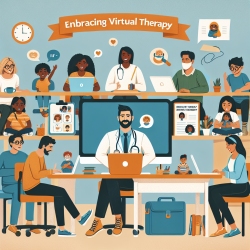Adolescents face unique challenges when accessing healthcare services, often due to a complex web of social-ecological barriers. A recent scoping review titled "Social-Ecological Barriers to Access to Healthcare for Adolescents" sheds light on these challenges and offers insights into how practitioners can enhance their service delivery to better meet the needs of young people.
Understanding the Social-Ecological Model (SEM)
The Social-Ecological Model (SEM) is a framework that helps us understand the multifaceted influences on individual behaviors, including healthcare access. It considers factors at various levels: intrapersonal, interpersonal, organizational, community, and policy. By examining these levels, practitioners can identify specific barriers and develop targeted interventions.
Key Barriers Identified
- Intrapersonal Level: Limited knowledge about available services and negative past experiences with healthcare can deter adolescents from seeking care.
- Interpersonal Level: Cultural and linguistic differences between patients and providers can create communication hurdles.
- Organizational Level: Structural issues such as long wait times and lack of coordinated care are significant obstacles.
- Community Level: Social stigma associated with seeking certain types of care can discourage adolescents from accessing necessary services.
- Policy Level: Inadequate insurance coverage and restrictive consent policies often limit access to care for youths.
Strategies for Practitioners
The review emphasizes that addressing these barriers requires a comprehensive approach. Here are some strategies practitioners can implement:
- Cultural Competency Training: Enhance communication by understanding cultural differences and providing language support where needed.
- Youth-Friendly Services: Create a welcoming environment that respects adolescents' need for confidentiality and autonomy.
- Coordinated Care Models: Implement systems that streamline care delivery across different services to reduce wait times and improve patient outcomes.
- Community Engagement: Work with local organizations to reduce stigma around healthcare-seeking behaviors through education and outreach programs.
- Advocacy for Policy Change: Engage in advocacy efforts to influence policy changes that support better insurance coverage and more flexible consent laws for minors.
The Path Forward
This scoping review highlights the importance of a systems-based approach in improving adolescent healthcare access. Practitioners are encouraged to collaborate with multidisciplinary teams, including youths themselves, to design interventions that address these complex barriers effectively. By doing so, we can ensure that all adolescents receive the quality care they deserve.
If you're interested in delving deeper into this topic, consider reading the original research paper: Social-Ecological Barriers to Access to Healthcare for Adolescents: A Scoping Review.










